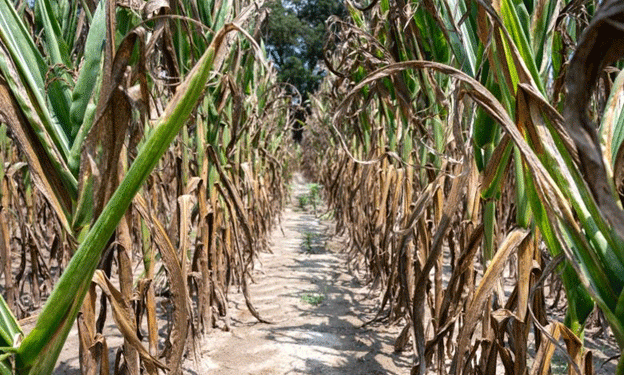After the Worst Season on Record, North Carolina Corn Farmers Look for Relief and Resilience
Last year was catastrophic for corn farmers in North Carolina. Once a $750 million powerhouse, the state’s corn industry generated just $250 million in 2024—its lowest output in recorded history. The sharp decline came as a result of relentless drought in the east and devastating flooding from Hurricane Helene in the west, leaving thousands of acres of cornfields barren and the farmers who relied on them deeply in debt.
According to Ronnie Heiniger, corn specialist at North Carolina State University, “It was just about as bad as it could get.” The impact? Farm equipment went unrepaired, seasonal workers were let go, and many producers had to rely on food assistance or take second jobs to make ends meet.
The Fragile Nature of Corn
Corn’s vulnerability to weather is nothing new. The crop’s short but critical pollination window—just 2 to 5 days—usually falls in June in North Carolina. If no rain falls during that period, yields can collapse. In 2024, a 60-day dry stretch left pollination impossible for many growers. NOAA classified much of eastern North Carolina as experiencing moderate to severe drought, while areas affected by Hurricane Helene faced extreme flooding within weeks—an unforgiving combination.
Economic Ripple Effects Beyond the Field
North Carolina’s corn is not just for food; it’s crucial for livestock feed and ethanol production. Sampson and Duplin counties, for example, house more pigs than people and are among the nation’s largest hog producers. A corn shortage drives up feed costs, shrinking profit margins for the entire meat supply chain. According to USDA data, feed costs for swine producers in the region jumped 8% year-over-year following the corn shortage.
The Corn Farmers Recovery Act (HB 296): A Glimmer of Hope
To counter the devastation, state lawmakers introduced the Corn Farmers Recovery Act, or HB 296. The bill would allocate $89.8 million from the State Emergency Response and Disaster Relief Fund to support those affected by the 2024 disaster.
If passed, the money would go to the North Carolina Department of Agriculture and Consumer Services to create a Corn Crop Loss Program, providing direct aid to farmers. But as of April 2025, the bill remains in legislative limbo, waiting for approval from several committees before it can be enacted.
Supporters argue the bill is essential not just for corn farmers but for the entire agricultural ecosystem, including retailers of farm inputs, tractor dealers, seed suppliers, and rural communities that rely on farming. Critics, including Rhonda Garrison of the Corn Growers Association of North Carolina, have raised concerns about how funds will be distributed, citing a lack of transparency in the formula.
Beyond Corn: Helping the Whole Farm
While the bill is corn-specific, experts say the relief will have cross-crop benefits. Many of North Carolina’s corn producers also grow soybeans, cotton, sweet potatoes, and wheat. Financial relief for corn will help them invest in these other key crops, preventing further economic collapse.
According to Mike Yoder, Associate Director of N.C. State’s College of Agriculture, “Supporting corn farmers indirectly supports the viability of North Carolina’s entire agricultural profile.”
Looking Ahead to 2025
As planting begins for the 2025 season, uncertainty remains high. NOAA forecasts show elevated risks of drought continuing into early summer, and the Atlantic hurricane season is projected to be above average, raising fears of another destructive weather pattern.
Still, there’s cautious optimism. “The corn industry in North Carolina isn’t going anywhere,” said extension agent Zach Parker of Sampson County. “We have animals to feed. What’s at stake is how well we’ll be able to do it.”
The story of North Carolina’s corn farmers is one of resilience under extreme stress. With livelihoods on the line and a changing climate adding volatility to an already difficult profession, financial support and forward-thinking policy are more essential than ever. Whether the Corn Farmers Recovery Act passes or not, it’s clear that farming communities need both relief and long-term strategies to adapt to a new climate reality—one that no longer guarantees rain in June or shelter from storms in September.
Error





